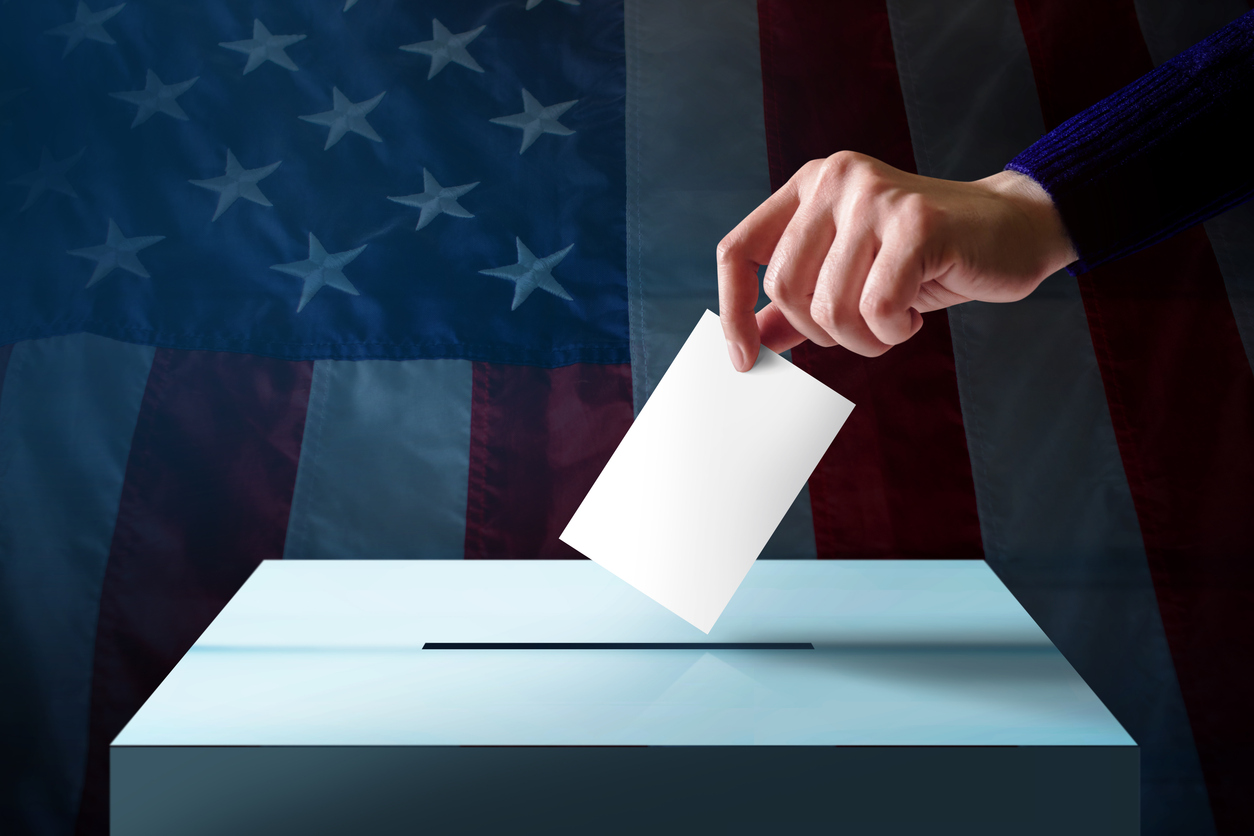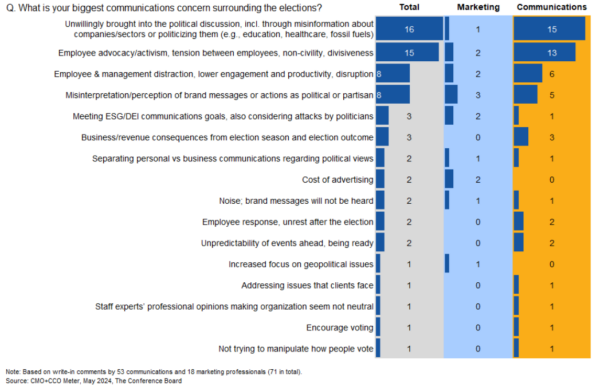Scenario planning strategies around election comms
Takeaways from Ragan and The Conference Board’s survey of communication and marketing professionals.

Boxing legend Mike Tyson famously said, “Everybody has a plan until they get punched in the nose.”
These words are also true as communicators step in to the ring to prepare their organizations for the upcoming elections. In both boxing and the workplace, the goal is to be prepared and able to defend against threats. But you must have a plan to lean on when your guard’s down — that that double jab in your back pocket.
Last month, Jano Cabrera, CCO at General Mills and Judy Rader, SVP of corporate affairs and CCO at Constellation Energy, joined Ragan Editorial Director and Editor-in-Chief Justin Joffe alongside The Conference Board’s Director of Marketing and Communications Research Denise Dalhoff to discuss recent survey results by Ragan and The Conference Board about how comms and marketing professionals are planning to keep their guard up ahead of this year’s contentious elections.
The report reveals that 40% of communications professionals will increase their managerial efforts to maintain a unified and tension-free workplace culture. Externally, 68% of respondents are not planning to adjust their messaging.
In planning for specific scenarios before and after the election, the best approach is to start early and communicate often. Cabrera began sending expectations to employees in January.
“We have a roadmap of communicating a total of four times over the course of the year what those expectations are,” Cabrera said. “There is a sense of responsibility on our side to make sure we are very clear.”
Rader kicked off Constellation’s election comms in February with a message about social media etiquette. In April, the organization’s women’s network also sponsored a webinar on navigating political conversations in the workplace.
In practice, there are four scenarios an organization might encounter in the upcoming months: being unwillingly brought into the political conversation, increased workplace disruptions, political discussion in company platforms and potential misinformation and deepfake encounters.
Here’s how a scenario plan can bolster your communication efforts and be the means of mitigating stress as November approaches.
Being unwillingly brought into the political conversation
Ragan and The Conference Board’s research revealed that respondents’ number one concern surrounding the election is being brought into the political sphere by others.
Before something like this happens, communicators are in the best position to create a plan specific to each possible politicized scenario that explicitly outlines the necessary stakeholders, messaging, and legal considerations through your common communication methods and materials. The plan should anticipate how each scenario could unfold internally and externally and map out a response focused on the company’s mission and values.
Cabrera emphasized the importance of an executive presence in each scenario. The game has changed for communicators, he said, emphasizing that “we need to think strategically about how to advise leaders to speak out.”
Managing disruptions in the workplace
Comms should also help managers prepare for when the election talk goes beyond the watercooler. Asked to share their biggest communications concern surrounding the election, survey respondents noted high concerns of employee and management distraction, lower engagement, and productivity disruption in their answers. Knowing this, it is imperative to plan accordingly.
Rader noted that two-thirds of Constellation’s workforce operates nuclear power plants. Though they do not see any drops in productivity around election periods or holidays, Rader mentioned “there is an intense commitment to world-class operations that they don’t allow our team to get distracted from.” Those in other mission-critical industries can feel inspired to lean on the importance of getting the work right during this time.
However, in April, Google CEO Sundar Pichai fired 28 employees who protested the company’s work with the Israeli government. In a statement, Pichai wrote that the company needs to enforce workplace policies and be “more focused in how we work, collaborate, discuss and even disagree.”
In bracing for a potential response or intervention, pay close attention to what discourse is relevant to the business and what is not as a means to filter. For managers to navigate the fine line between normal distractions and political disruptions, they must know the key events leading up to the election, and be equipped with the resources time specific communication around them.
When political conversations permeate company platforms
The survey results suggest this year’s biggest new election season challenge may be preempting potential workplace tensions — creating additional responsibilities for HR, comms teams, and managers.
Cabrera recommends those in charge very clearly communicate expectations for where these conversations are appropriate. Last election cycle, Cabrera had to tell an employee to remove a post on their company feed. Once deleted, he took the opportunity to repost their company guidelines. When this happens, he said to “see it for what it is, an opportunity to share expectations.”
Similarly, Rader said guidelines on decorum are posted at the top of Constellation’s intranet channel. First, she recommends establishing and revisiting your organization’s decorum and policy. Then you can pin or repost the guidelines to offer employees and managers a consistent framework. When something raises eyebrows, this ensures managers are already equipped to determine if a message violates standards and if intervention is necessary.
Navigating misinformation and deepfake encounters
Throughout all of this, maintaining an education throughline is key. The proliferation of deepfakes and misinformation is on the radar of professionals like Cabrera and Rader. Brands can be a dependable source of information in the age of misinformation and disinformation.
While communicating messages about voting and election day, simultaneously educate about deepfakes and call attention to the hazards in elections and your industry. Your scenario plan should address the specific cases where an election-related deepfake is spread in your company platform, or a deepfake is created of a company employee or executive.
Check out the full results of Ragan and The Conference Board’s election issues survey here.







